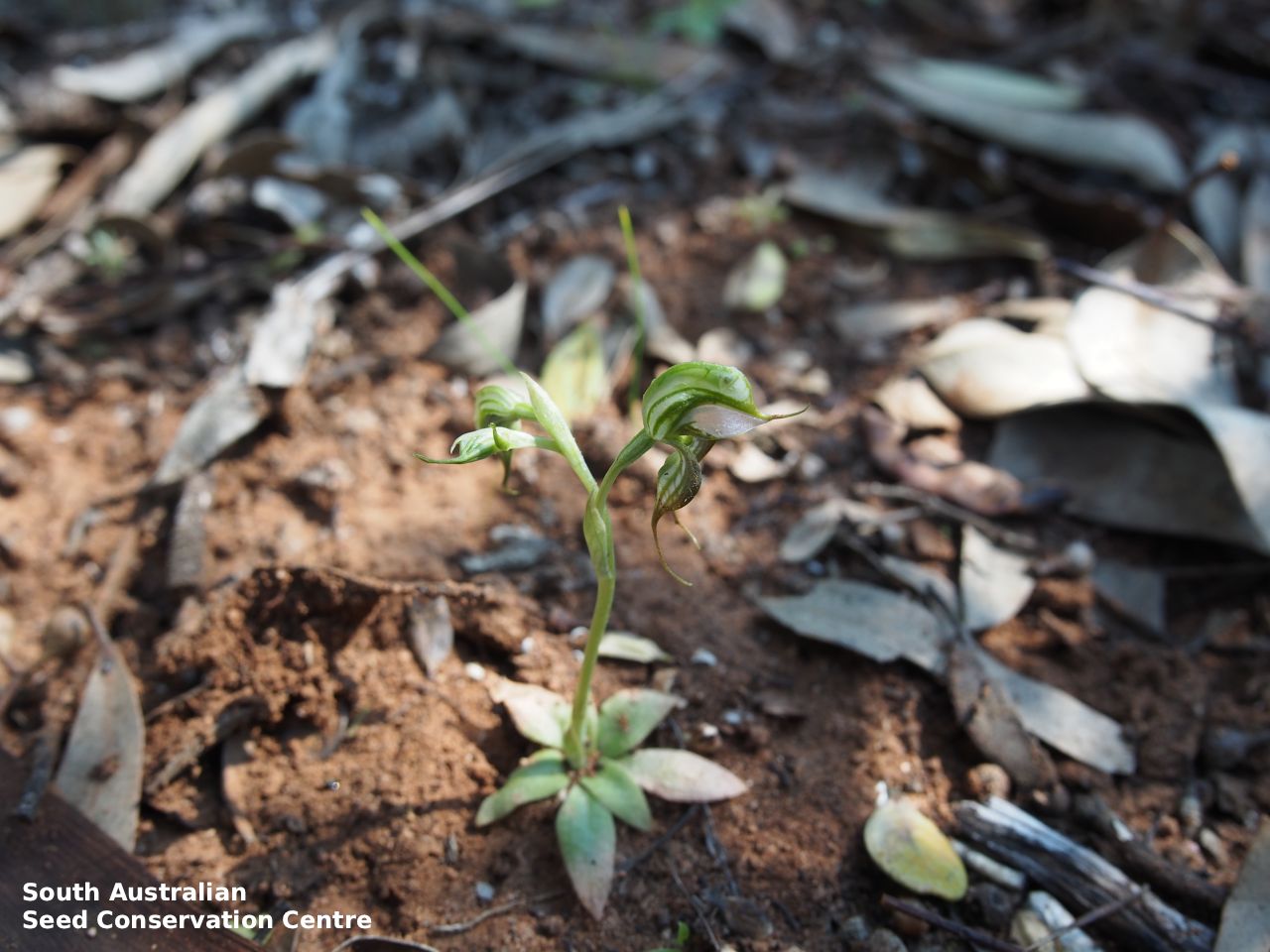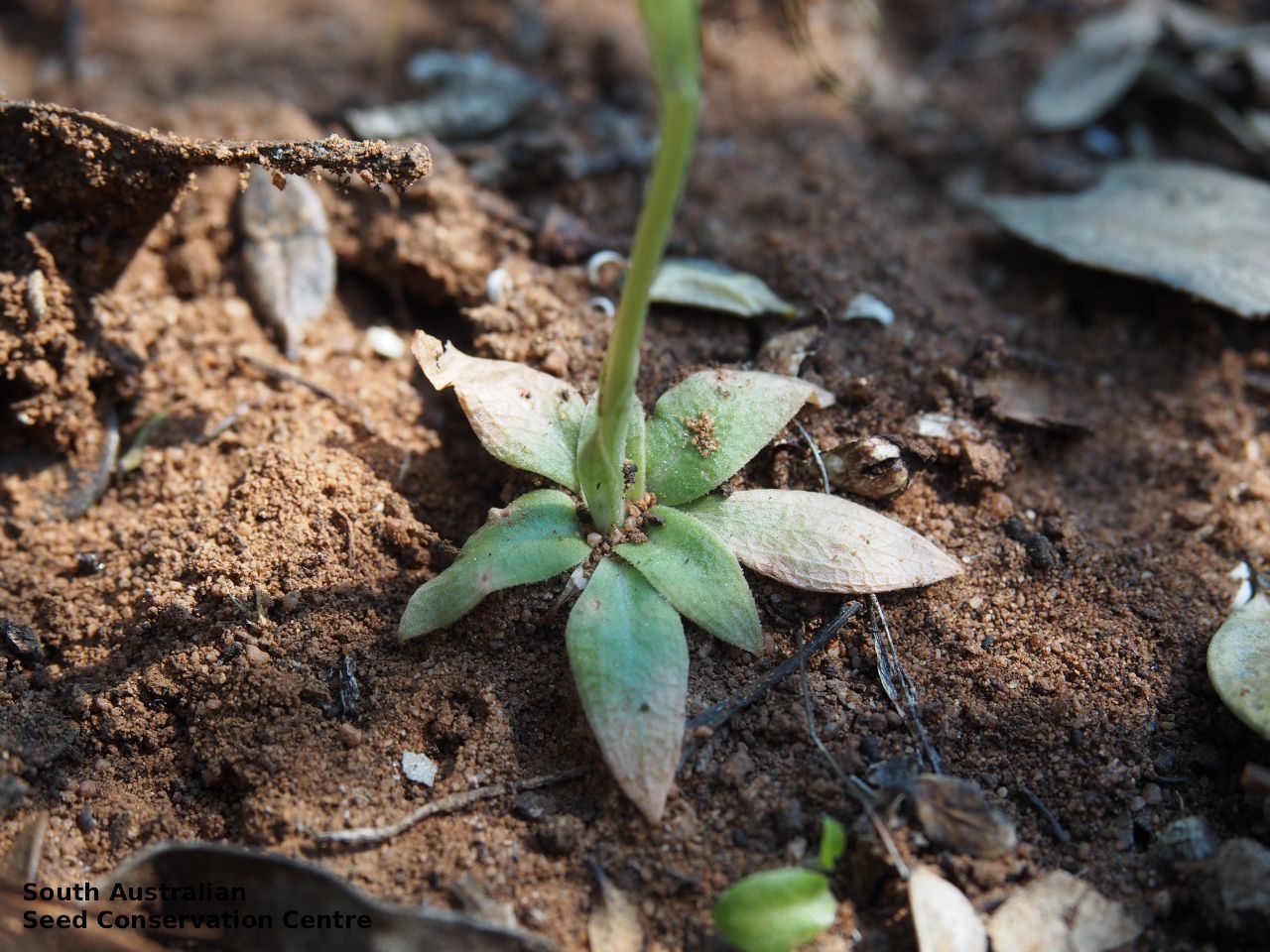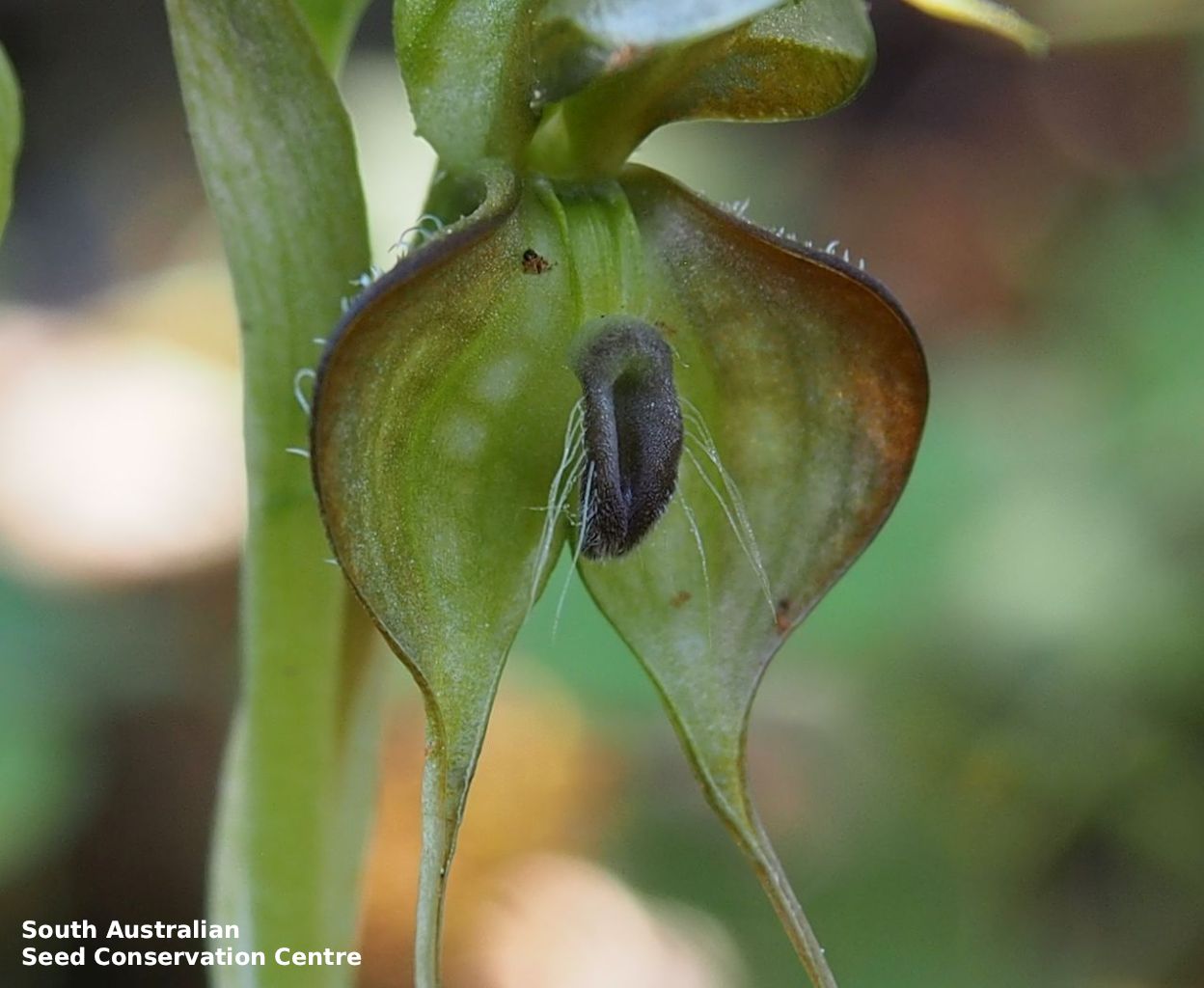







Prior names
Pterostylis sp.11 (Halbury; R.Bates 8425)
Pterostylis aff. boormanii Rupp
Oligochaetochilus "Halbury" RB 8425
Pterostylis sp. Halbury (R.Bates 8425)
Oligochaetochilus lepidus
Common names
Halbury Rufous-hood
Halbury Rustyhood
Etymology
Pterostylis from the Greek ‘pteron’ meaning a wing and ‘stylis’ meaning a style or column; referring to the prominent wings found at the top of the column in all species. Lepida from the Latin ‘lepidus’ meaning elegant, neat or fine; alluding to tyhe small neat habit of the species.
Distribution and status
Endemic to South Australia and restricted to the Adelaide Plains as far north as Snowtown, growing in loamy or clay soils in Callitris and Mallee-woodland, often over limestone. Native. Very rare in South Australia.
Herbarium regions: Northern Lofty, Yorke Peninsula, Southern Lofty, Green Adelaide
AVH map: SA distribution map (external link)
Plant description
Herb with 5-10 green ovate leaves forming a small basal rosette to 5 cm across, flat on the ground. Flower stem reaching to 30 cm, but usually about 10 cm, slender, becoming wiry with age. Flowers few to about ten, only one or two open at a time, greenish or greenish brown with paler striations; lateral sepals deflexed, basally broad, the apices filiform to 2 cm long, divergent and often upturned. The labellum is tiny, to 4 mm long, oblong, thick and channeled, margins with few long silky setae. Flowering between July and October. Fruits are brown papery ellipsoid capsule. Seeds are very small brown ellipsoid seed with a long translucent brown mesh-like covering.
Seed collection and propagation
Collect seeds between November and December. Collect fat capsules as they start to dry and turn brown. Pods will split and release the seeds quickly and will require monitoring. To increase the chances of collecting mature pods, it is recommended that a small breathable bag (ie. Organza bags) be used to enclose the developing capsules. Place the capsules in a container that will hold fine seeds and leave to dry for a few weeks or until the capsule split. Then carefully hold the capsule and tap it gently to release the seeds. Store the seeds with a desiccant such as dried silica beads or dry rice, in an air tight container in a cool and dry place or in liquid nitrogen.
| Location | No. of seeds (weight grams) | Number of plants | Date collected | Collection number Collection location | Date stored | % Viability | Storage temperature |
|---|---|---|---|---|---|---|---|
| 2 pods | 27-Oct-2007 | J. Quarmby Northern Lofty | 1-Nov-2016 | N/C | -80°C | ||
| BGA | 107,000 (0.0369 g) | 2 | Erica Rees Northern Lofty | 1-Nov-2016 | 80% | -80°C | |
| 18-Oct-2005 | J. Quarmby Northern Lofty | 1-Nov-2016 | N/C | -80°C | |||
| 27-Oct-2007 | J. Quarmby Northern Lofty | 1-Nov-2016 | N/C | -80°C | |||
| BGA | 1,540,000 (0.527 g) | 30+ | 3-Oct-2014 | KHB841 Northern Lofty | 1-Nov-2016 | 70% | -80°C |
| 18-Oct-2005 | J. Quarmby Northern Lofty | 1-Nov-2016 | N/C | -80°C |
Number of plants: This is the number of plants from which the seeds were collected.
Collection location: The Herbarium of South Australia's region name.
% Viability: Percentage of filled healthy seeds determined by a cut test or x-ray.